How to Get Pictures of My Artwork to Upload Online
Here are some tips & tricks on how to photograph and edit your artwork to upload online, whether it be for your online shop or social media account.
Presentation is key, and sometimes just patently photos don't do the painting whatever justice.
With the right equipment and techniques, editing will help bring out the right colors so that y'all'll exist able to show everybody your art merely every bit shut as it can be to a existent life experience
And without further ado, I hope you enjoy and learn something!
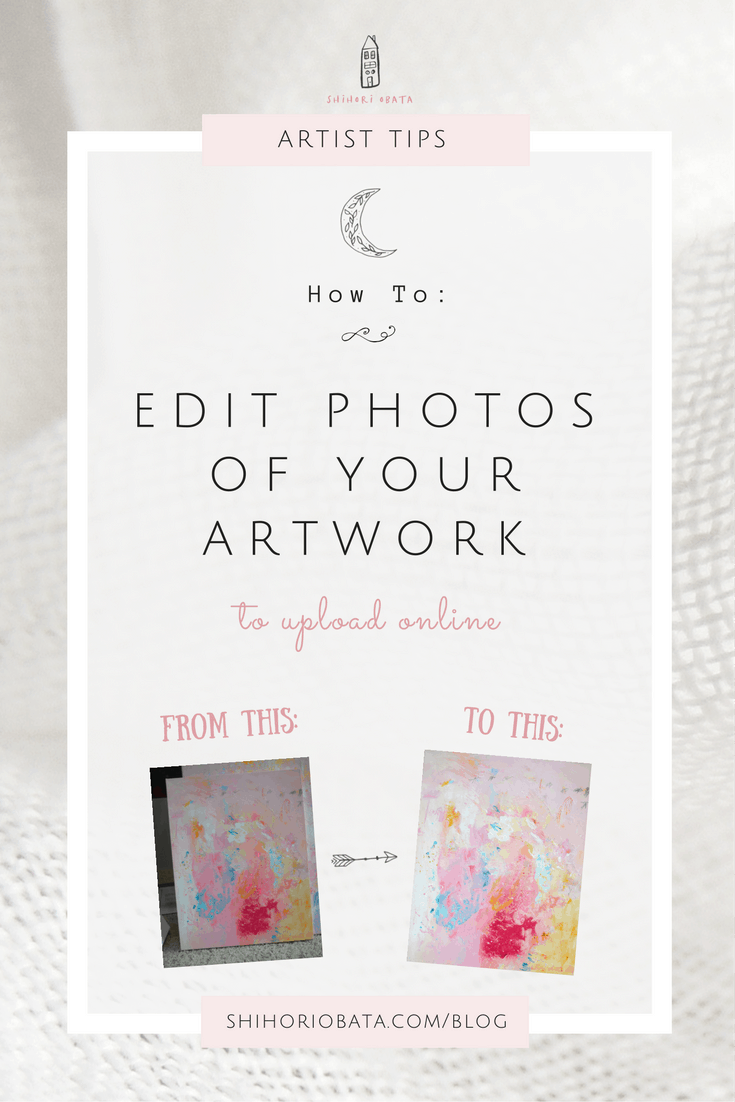
i. Get the Setup Just Right
This is everything that you tin do before you take that motion picture to ensure the photo turns out the best quality information technology can be!
This is one of the most overlooked steps, but it'southward what makes the biggest deviation in the terminate.
- Lighting is SUPER important when it comes to taking a quality photo of any kind. Make certain to accept it in a well-lit room during daytime so you lot get lots of natural light.
- Depending on what you are trying to sell (And your own aesthetic preferences), you lot tin can either try to minimize shadows past keeping the light even all effectually OR set up upwards by a window and then that shadows fall around your item. I observe that some people pull it off really well, and so I'll leave that option open in instance you want to deliberate on that 🙂
- **Tip: I like to supplement natural light with my own lights. Employ lightbulbs that mimic daylight by producing white lite instead of yellowish/orange low-cal.
- Here are some inexpensive ones I constitute on Amazon or you can get to your local store and await on the box for color temperatures at around the 5,000k
- Utilize a make clean, minimal background that doesn't draw the viewer'due south heart away from the item you lot are trying to showcase. Having also much going on in your picture show may take away from putting the full spotlight on your item.
- If your studio is a mess (like mine), you lot can always crop out the background and create a mock-up scene with your art hanging on a more clean, beautiful space. This will too assist the customer exist able to envision the art in their ain domicile. I'll show you how to practice that shortly!
2. Take a Movie of Your Art
Brand sure to invest in a relatively loftier quality camera (Even more so if you are planning to create prints of your art with those photos).
Just for getting a photo to put up in your shop or website still, you lot'll exist fine using a digital camera or an affordable DSLR camera.
I use the Nikon D3300 ( Available hither on Amazon for $396 ), and it's done the job actually well for me. Plus it's a great alternative for those of you lot who don't want to spend likewise much on a great quality DSLR photographic camera.
When taking your photo, make sure to:
- Take your photo from a straight-on angle. Try to make information technology as foursquare as possible.
- Use a tripod if y'all don't have stable arms or a surface to accept the shot from.
- Do not zoom into your artwork to become it to fit to frame. Instead, move the photographic camera closer. This helps keep the quality of the photo as loftier as possible.
- Be careful of besides much glares or shadows falling onto your artwork if y'all are planning on cropping it.
- Besides consider taking several close-up shots so potential buyers can run across details and textures in your art.
If possible, yous can also browse your artwork if it is on paper.
My advice for when doing this is to browse it at at to the lowest degree 300dpi to capture your artwork at its best quality.
I generally like to scan my works on newspaper at 400dpi (sometimes even 600dpi if the painting is really small).
Normally, scanning volition capture more than details than taking a photo of your painting, simply alas, large flatbed scanners are extremely expensive and are oftentimes not available to the majority of us.
That is why I recommend taking a photograph with your photographic camera for larger works that can't be scanned.
Import/Transfer your photos onto a estimator to be edited.
iii. Edit Your Art Photos for Dimensions and Color
For this part of this blog post, I'll be using Photoshop CS6 to exercise nigh of my editing. If you do not have Photoshop, you can use other photo editing softwares you have available to you.
Get Photoshop every bit part of a Creative Deject single-app plan for just US $19.99/mo.

Hither are some costless photograph editing softwares to consider if you lot exercise non have Photoshop:
- GIMP
- Pixlr
- Paint.net
- SumoPaint
- PicMonkey (Free Trial Bachelor)
If you are editing your photos on your phone to upload onto Social Media, you can observe equivalent photograph editing apps to do these steps also.
I love using the app Snapseed to edit photos on my telephone: Information technology tin do all these functions plus more and you tin can download it for Complimentary in your app store – Available on both Android and iOS software.
**Tip: If you are editing your photos to be printed in the hereafter, I highly recommend you colour calibrate your monitor.
Before:
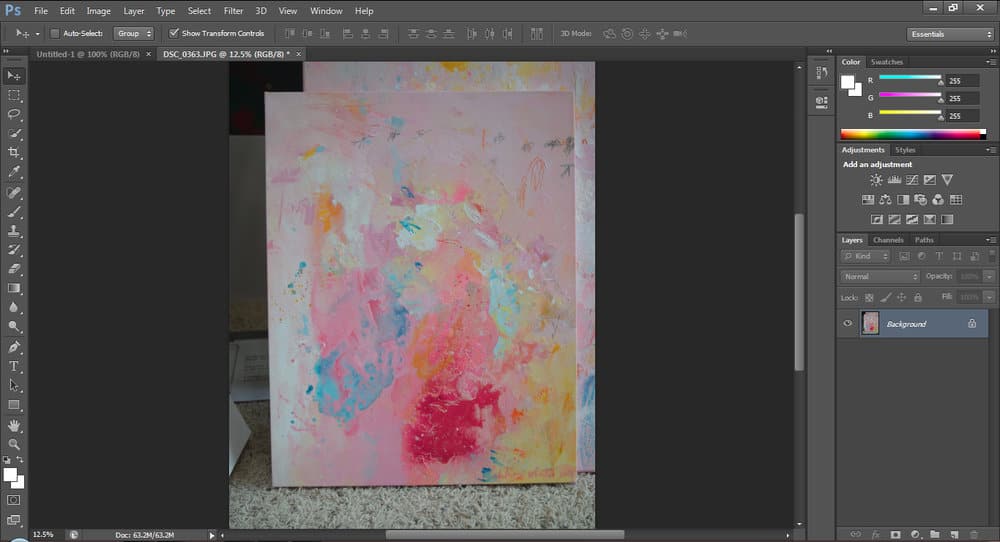
Here'due south a Before photo of ane of my paintings before I have washed any editing to it.
Notice how even though I took the photo in daylight and with a DSLR camera, the colors of this painting notwithstanding look irksome and nighttime.
It takes extra editing and impact-ups to get it to match how the painting truly looks in real life so that I can bring my artwork to others in its best grade and quality possible.
Below are the steps I apply to really transform my art digitally into what information technology truly looks like in-person.
How To Crop Your Photo
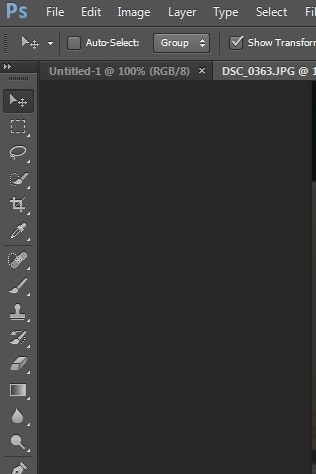
i. Go to your sidebar where your tools are located.
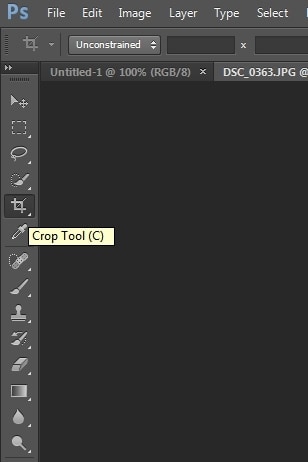
2. Find the crop tool.
3. Right click the crop tool and select the Perspective Ingather Tool
Using the Perspective Crop Tool
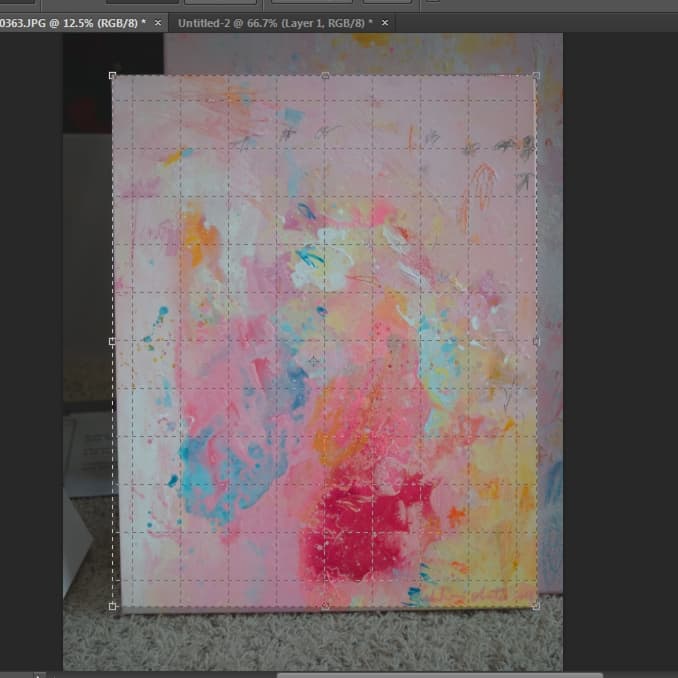
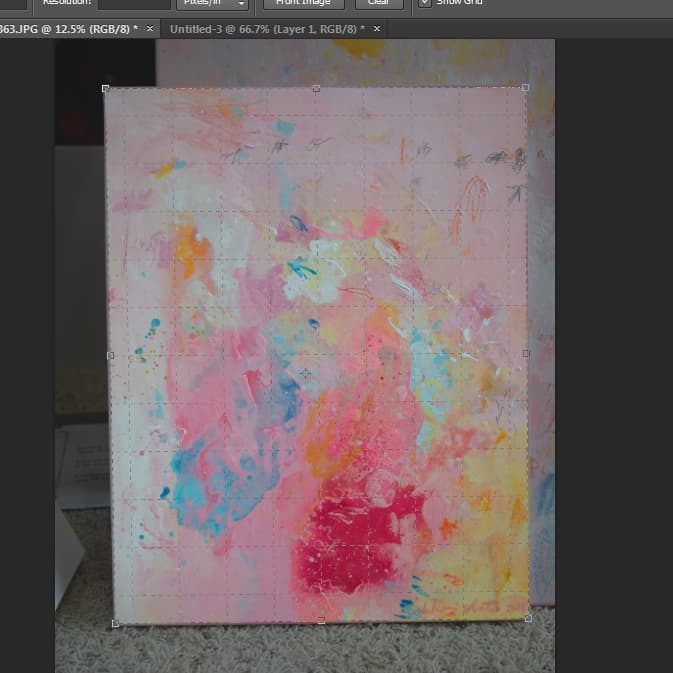
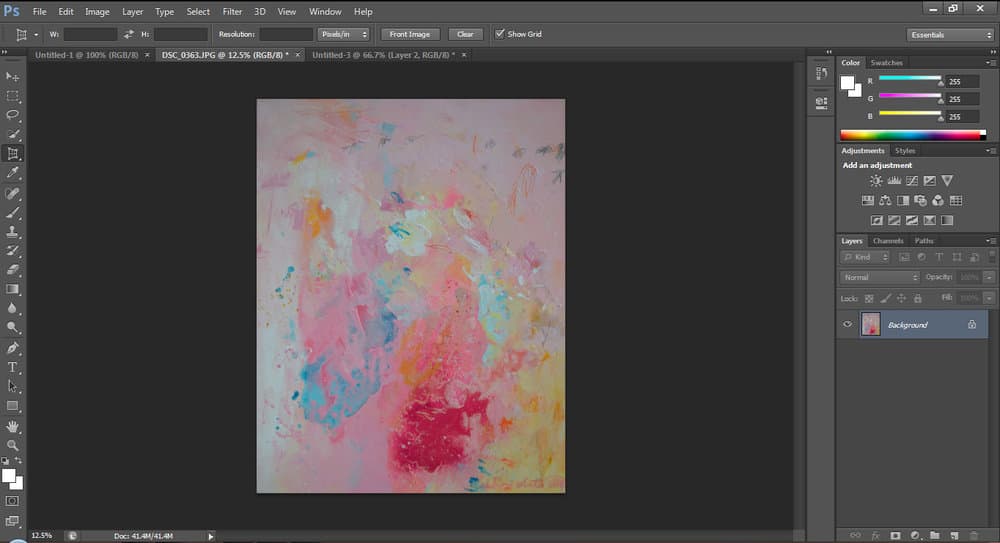
4. Click and drag to fit your artwork to fit the frame. You lot may detect that the corners practice non match when you do this.
Drag each corner to match where the corners of your painting is. In one case all the corners match, hit Enter or the bank check mark in the upper right corner.
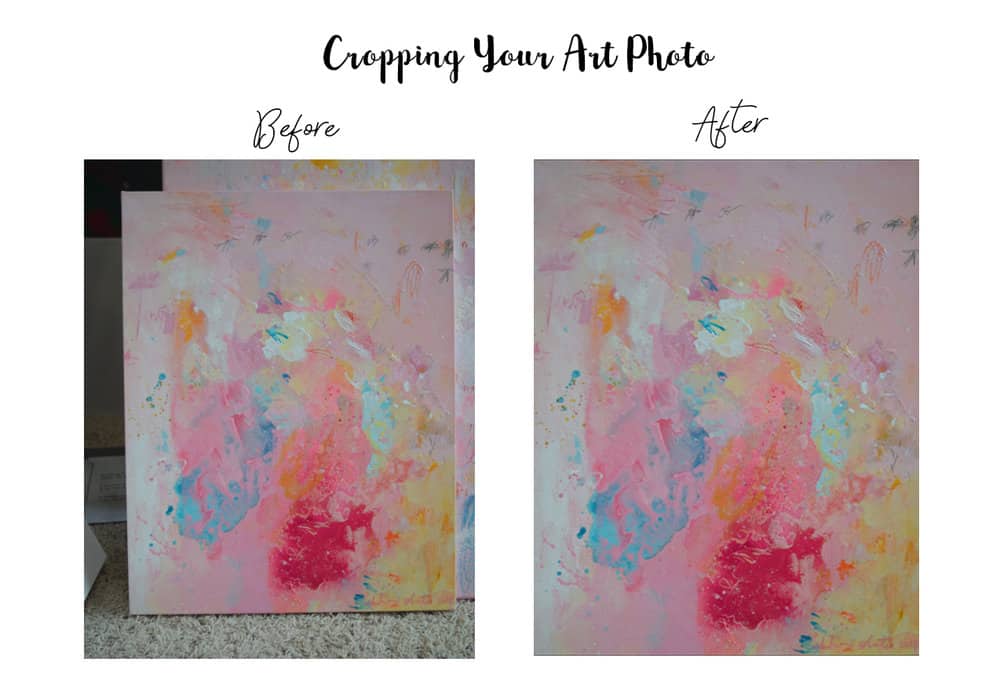
** If you do not have the perspective cropping tool, y'all can nonetheless utilise the normal crop tool to crop your artwork.
Attempt rotating your artwork as best as you can and getting it as square every bit possible. Then crop to ensure that the background of the photo does not evidence.
** To also brand sure all your proportions are practiced, become to Epitome > Image Size
Then adjust the document size to the bodily piece's size (For case, if your actual piece is viii×10 inches, modify the size of the image to 8 by x inches.
As well brand sure that the image size stays around 300dpi.)
And so hitting Enter or OK. Your image should now exist in proportion to your original artwork as close as it can be.
How to Adjust the Brightness, Curves, etc
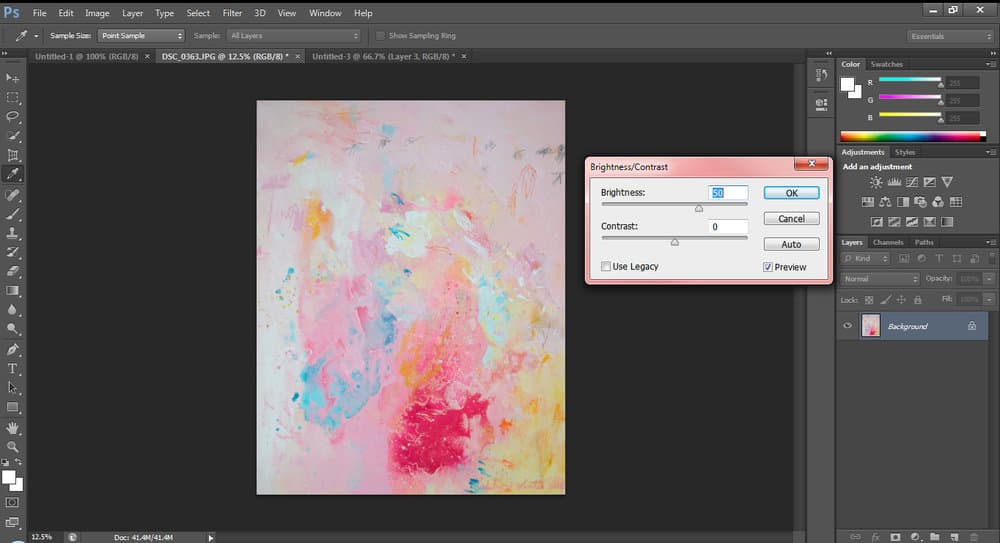
i. Get to > Prototype > Adjustments > Effulgence/Contrast
2. Adapt the Brightness using the slider appropriately. I more often than not up the brightness to around twoscore-60 depending on the lighting weather. Depending on your photographic camera and surroundings, your adjustments will be different as well.
3. Select OK
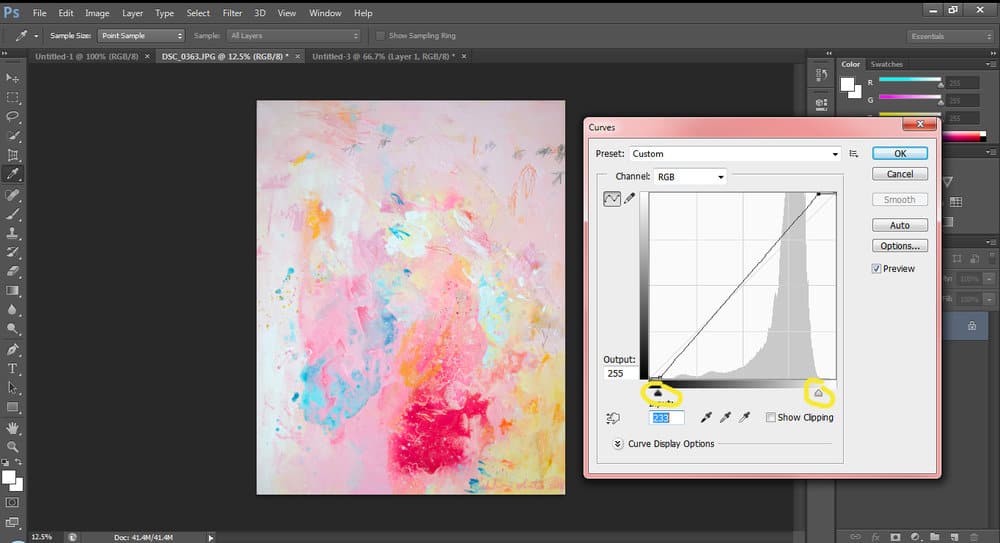
i. Go to > Paradigm > Adjustments > Curves
2. Move the sliders depending on where your curves start and end. You'll be able to run into how it affects the photograph of your fine art, just in summary it makes the whites brighter and the blacks darker. Conform these sliders then that the colors of the artwork on your screen matches the colors on the bodily slice.
** In that location are other adjustments you can make according to what you lot may need. You can adjust Contrast, Temperature, Levels, Saturation, Vibrance, or Exposure.
Experiment and see what works best with your specific photographic camera and surroundings.
Generally, if my lighting and equipment is platonic, simply adjusting the Brightness and Curves is plenty for me. Practice what works all-time for your fine art.
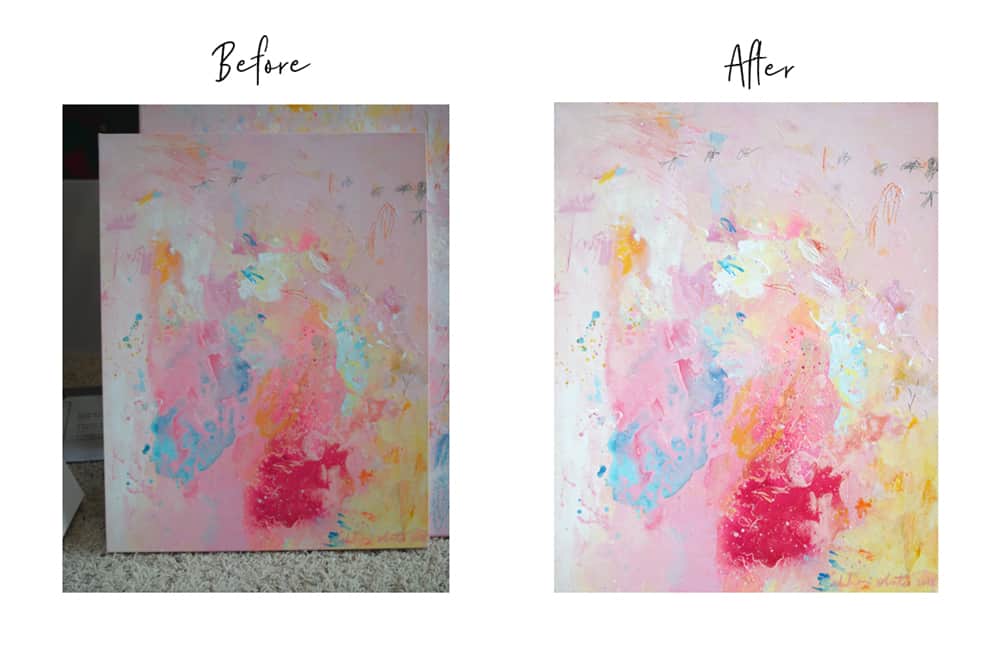
Wow, pretty big difference!
iv. Save Your Art Photograph
I salvage my photo using multiple means.
You tin do but i of these methods or all of them depending on what you think you'll exist needing those images for in future uses.
- In Photoshop, I go to File > Save As and Salve the concluding image every bit both a TIFF and as a JPEG.
- Saving your image as a TIFF file keeps your edited image in its highest-quality, original class (Uncompressed). This will prove really handy when you are trying to create prints of your artwork – Because unfortunately, saving as a JPEG compresses the image every time you lot striking relieve. Doing this over time really degrades the quality of your image. Saving as a TIFF acts as a fill-in and then you lot don't lose that original prototype.
- JPEG is the well-nigh popular way to salvage and upload images on the web. It is generally the almost useful way to quickly and efficiently upload a general picture of your artwork.
- Another way to save an image to upload onto the Web: In Photoshop, become to File > Salve for Web – And a window like the i shown beneath should pop up.
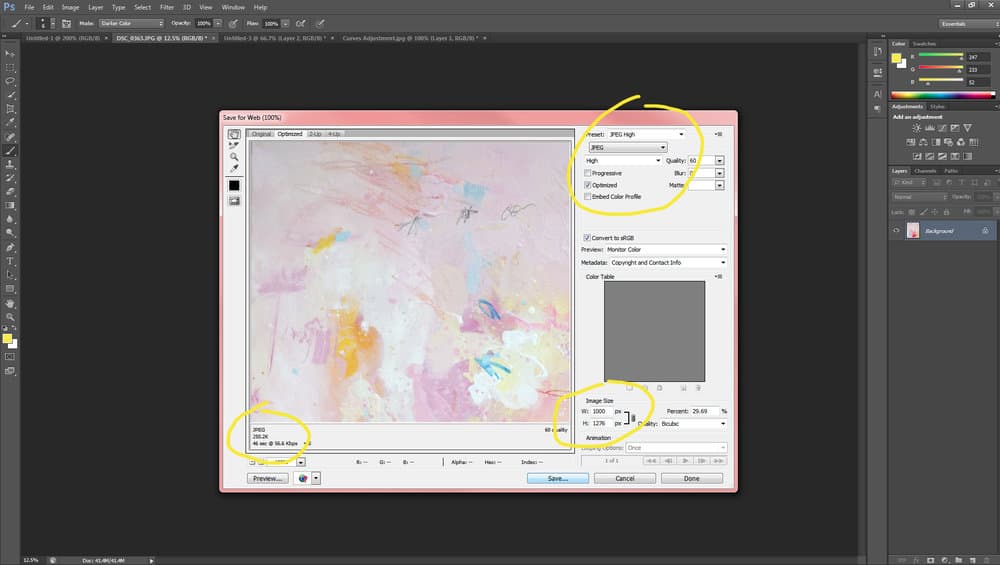
one. Make sure in the upper correct corner of that window, you are saving your file as a JPEG.
2. In the lower right corner of the window, there is a identify to accommodate the epitome size. I generally try to keep the image in the lower 1000's px to keep the image size (located in the lower left corner) small.
3. Select Salvage
**Tip: Doing this is really helpful if yous take an online shop or are posting your photos on your website. Compressing your photos as small as it can exist without hindering its quality helps your web page run smoother with less loading time for your website visitors.
5. Create a Mock Upward Scene for Your Art
Hither are unlike sources where I get my own Mock Upwardly Scenes for my own Artwork:
- Mockup World: They have a category dedicated to Gratuitous mock ups. I like to filter through and look for wall/poster/framed mock ups that are available for download.
- Costless stock photo websites such every bit Unsplash, Pexels, and Pixabay are great places to discover beautiful interiors and wall space images that y'all tin can Photoshop your artwork into. Search for keywords like wall, room, interior, etc.
- For more than branded or high quality mock upward photos, I similar to purchase them from CreativeMarket. I've seen ones go for as low equally $4 to affordable bundles at $20-$40. Hither are a couple sellers I recommend.
Once you lot've chosen the mock up photo you want to use, go to File > Place and add together the image of your artwork into the mockup scene. Accommodate layers as necessary.
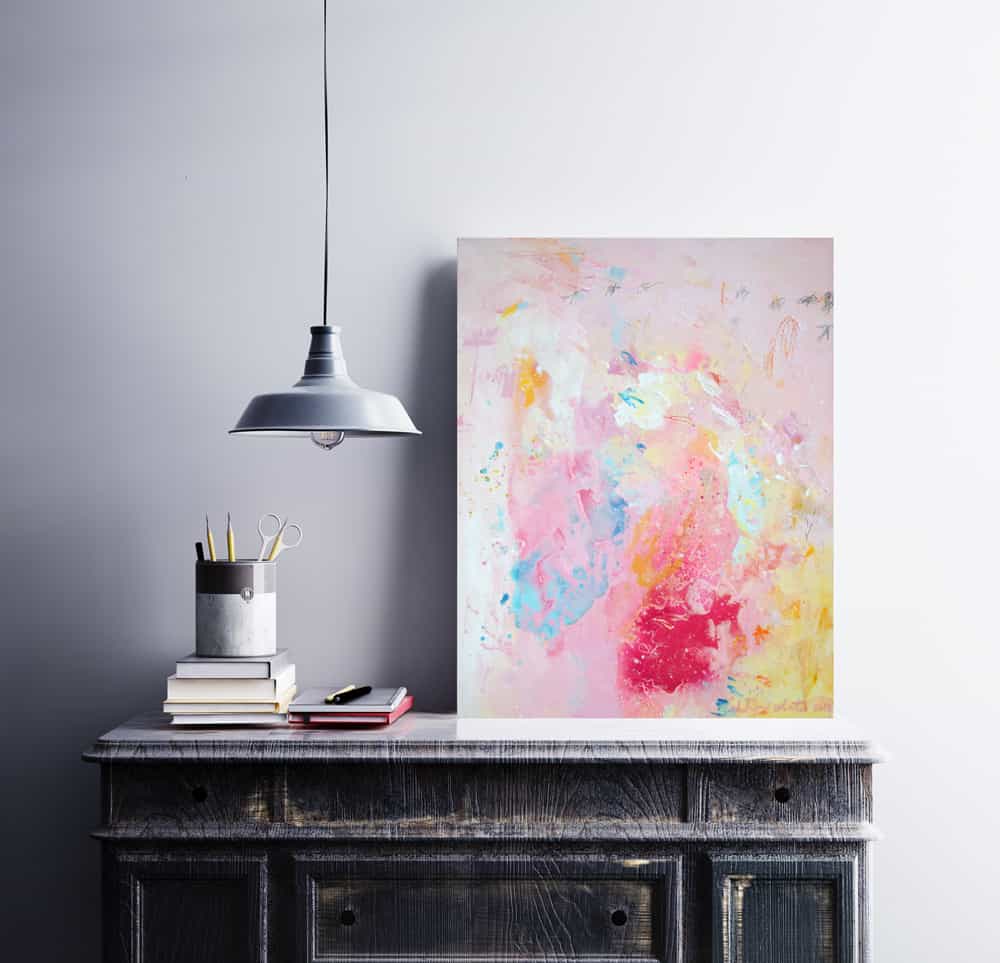
Here's the painting in its new setting!
half-dozen. Upload and Share!
And now that you have the knowledge, share your artwork in it'southward best possible state to the world! Your cute artwork deserves to exist seen and experienced by others!
I hope you found this blog mail helpful and if you lot have whatsoever questions or other topics you want me to encompass, comment down below. Would dear to hear from you lot! Good luck in all your creative endeavors and until next time!
xo
lococomaystionite.blogspot.com
Source: https://www.shihoriobata.com/blog/how-to-edit-photos-of-your-artwork/
0 Response to "How to Get Pictures of My Artwork to Upload Online"
Post a Comment